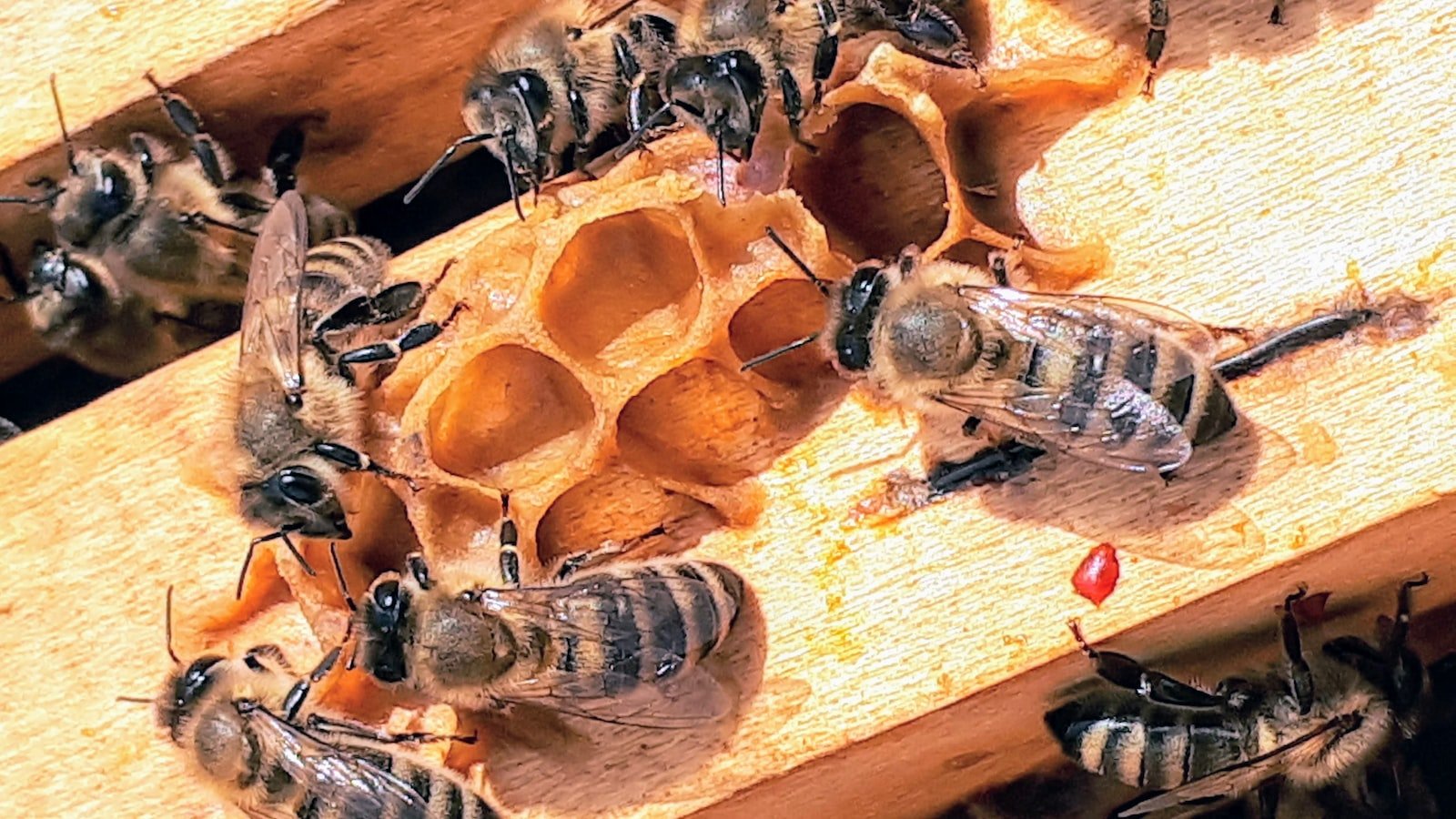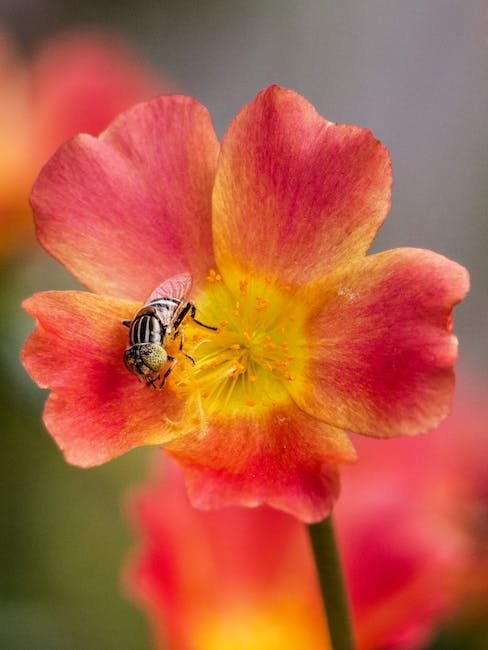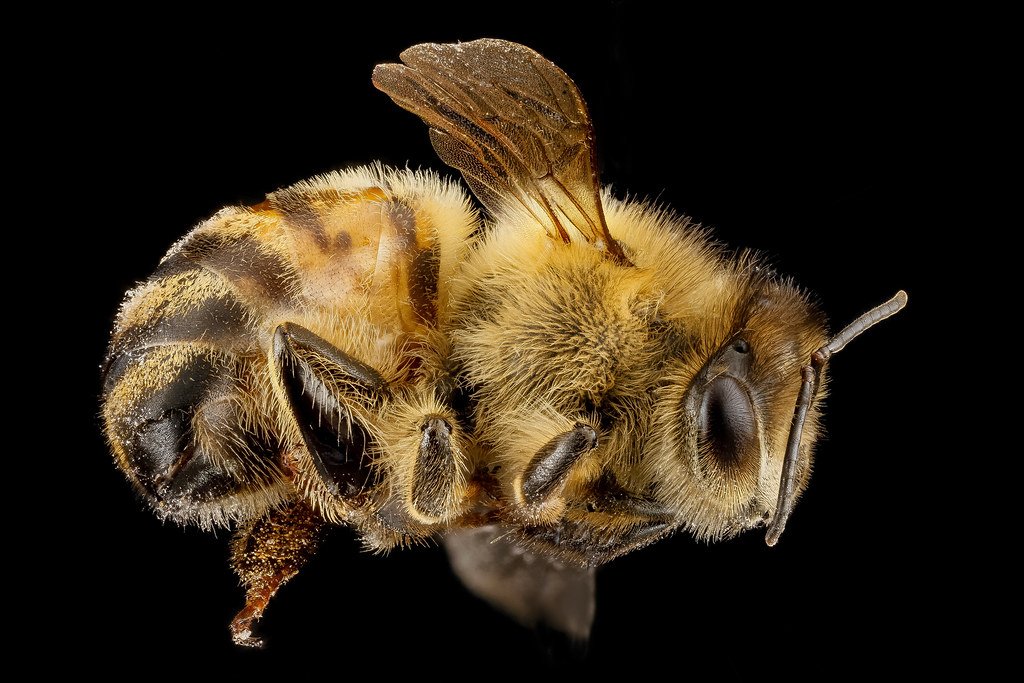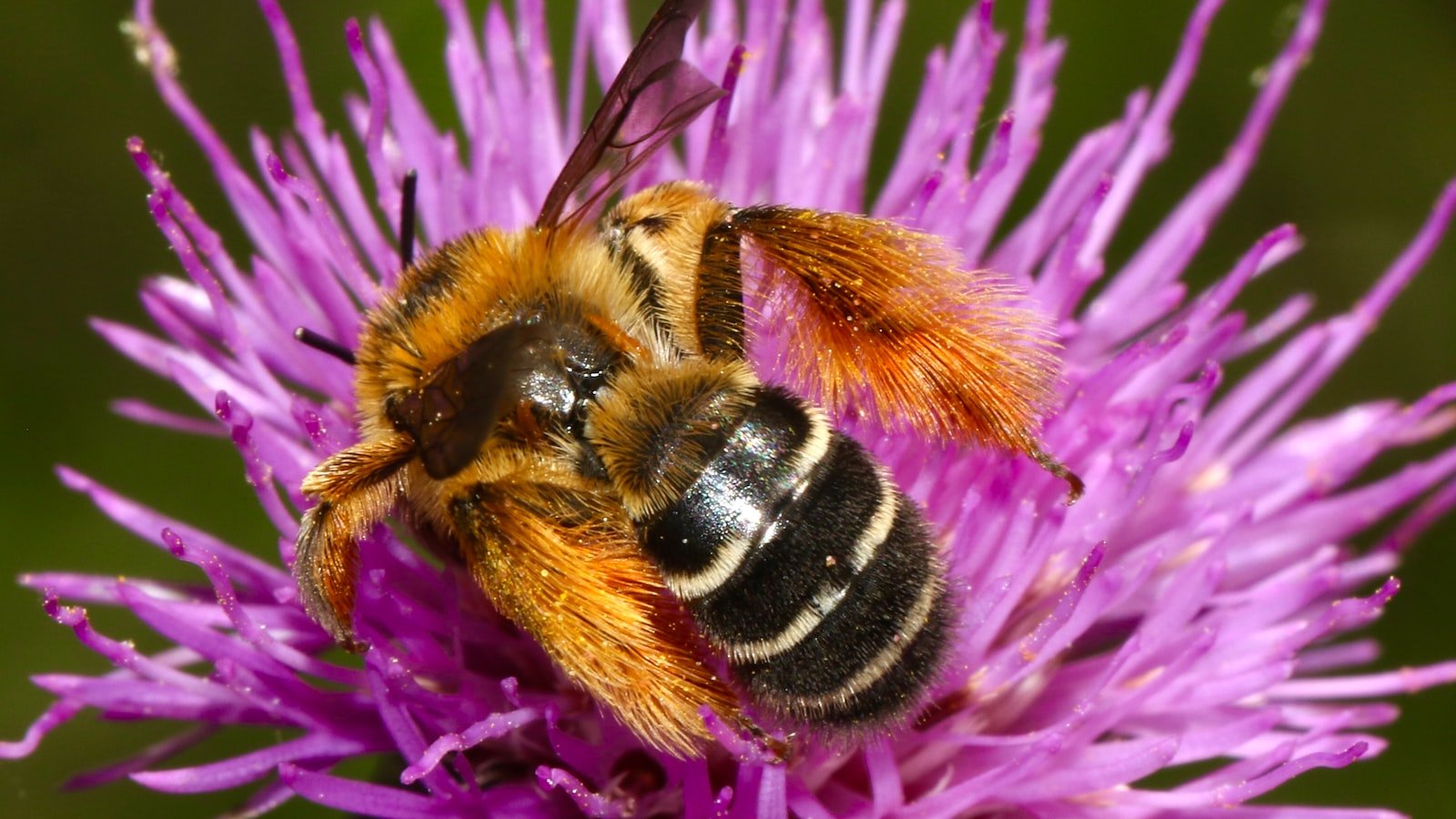Imagine a world devoid of vibrant flower fields, lush gardens, and bountiful harvests. A world where the gentle buzz of bees is replaced by an unsettling silence. Hard to fathom, isn’t it? Bees, those tireless little pollinators, hold within them a power that is often overlooked but crucial for our planet’s biodiversity. From that first sip of nectar to the dizzying dance from blossom to blossom, bees play a captivating role in the delicate tapestry of life. So join us as we dive into the enchanting world of bees and uncover the remarkable ways in which they shape and sustain the rich diversity of our natural world.
Table of Contents
- The Importance of Bees in Maintaining Biodiversity
- Understanding the Loss of Bee Populations and its Impact on Ecosystems
- The Mutual Relationship Between Bees and Plants: Pollination at its Finest
- Promoting Bee Conservation: Actions You Can Take to Support Biodiversity
- Creating Bee-friendly Environments: How to Provide a Habitat for Bees to Thrive
- Q&A
- Concluding Remarks

The Importance of Bees in Maintaining Biodiversity
Bees are often underestimated when it comes to the crucial role they play in maintaining biodiversity. These humble creatures not only produce honey but also act as hardworking pollinators, facilitating the reproduction of numerous plant species, many of which serve as essential sources of food for both humans and wildlife. Without bees and their efficient pollination methods, the world would suffer a devastating loss of plant diversity, ultimately affecting the delicate balance of our ecosystems.
So, how exactly do bees contribute to biodiversity? Let’s explore:
- Pollination Powerhouse: Bees are exceptional pollinators due to their fuzzy bodies and foraging habits. As they move from flower to flower collecting nectar and pollen, they inadvertently transfer pollen grains, aiding in the fertilization of flowers. This process is crucial for the reproduction of plants, enabling them to produce seeds and fruits.
- Protecting Natural Habitats: As bees go about their vital pollination work, they inadvertently assist in the dispersal of seeds across various habitats. By doing so, they contribute to the regeneration and expansion of plant communities, ultimately helping to maintain the biodiversity of different ecosystems.
- Supporting Food Chains: Bees provide a vital link in the food chains of countless organisms. They play a fundamental role as primary pollinators for crops, wildflowers, and even trees, ensuring the production of fruits, nuts, and seeds on which many animals rely for nourishment. Without bees, countless animal species would struggle to find adequate food sources.
It is essential to recognize the importance of bees as nature’s unsung heroes, tirelessly working to sustain the world’s biodiversity. Supporting initiatives aimed at preserving and protecting bee populations is not just about safeguarding them but also about protecting the delicate web of life that hinges on their pollination activities. So next time you see a bee buzzing by, take a moment to appreciate and celebrate their vital role in maintaining the marvels of biodiversity that surround us.

Understanding the Loss of Bee Populations and its Impact on Ecosystems
Bees, small yet mighty creatures, play a vital role in maintaining ecological balance. The recent decline in bee populations has raised concerns among scientists and environmentalists worldwide. This phenomenon, known as Colony Collapse Disorder (CCD), poses grave threats to our ecosystems and even our food security.
1. Pollination disruption: Bees are remarkable pollinators, enabling the reproduction of numerous plant species. According to experts, they contribute to the pollination of nearly 75% of crops globally. When bee populations decline, the pollination process is disrupted, leading to reduced yields, lower quality produce, and eventually impacting our food supply.
2. Biodiversity loss: The loss of bees can also trigger a chain reaction, affecting other organisms within ecosystems. Bees are critical in maintaining the diversity of plant species. Their absence can lead to a decline in plant populations, which impacts herbivores, predators, and even birds that rely on plants for sustenance and shelter.
3. Altered habitats: Bee populations’ decline can result in changes to the physical structure and composition of habitats. Their absence disrupts the natural balance, allowing invasive plant species to flourish, and altering the landscape dynamics. This, in turn, can impact soil quality, nutrient cycles, and overall ecosystem stability.
We cannot underestimate the significance of bees in preserving the delicate harmony that exists within our ecosystems. Efforts to understand the underlying causes of bee population decline and implement sustainable solutions are crucial for the well-being of our planet and future generations.

The Mutual Relationship Between Bees and Plants: Pollination at its Finest
Within the enchanting realm of nature, a remarkable dance of mutual dependence unfolds between bees and plants. This intricate relationship, known as pollination, is a symphony orchestrated by nature herself. Bees, with their buzzing wings and furry bodies, play the critical role of pollinators, while plants, adorned with vibrant hues and sweet nectars, provide sustenance. As they come together in this harmonious partnership, a tapestry of life and fertility is woven.
In the bustling world of pollination, bees flit effortlessly from flower to flower, their tiny feet skillfully collecting pollen. This precious cargo, clinging to their fuzzy bodies, acts as a natural glue enabling cross-pollination between plants. With every graceful flit, bees unknowingly become vital intermediaries, facilitating the reproduction of countless plant species. The symbiotic alliance between bees and plants lies at the very core of biodiversity and ensures the continued existence of countless flora and fauna.
In appreciation of this extraordinary collaboration, let us explore some intriguing adaptations that have evolved over time:
- Flower Morphology: Through the ages, plants have developed fascinating ways to attract bees. Elaborate shapes, vibrant colors, and intoxicating scents all serve as beacons to guide bees towards the promise of nectar and pollen. Think of orchids beautifully mimicking the appearance of female bees to entice their male counterparts, or tubular flowers designed perfectly for specific bee proboscises.
- Synchronized Life Cycles: The synchronization of flowering plants with the emergence of bees ensures a successful mating dance. By blooming during a bee’s active season, plants maximize the chances of receiving pollen from multiple sources, aiding genetic diversity and the overall health of the population.
- Communication through Chemistry: Plants can communicate their availability for pollination through the release of chemical signals, known as pheromones, that attract bees from afar. These natural perfumes guide bees to the flowers in need, facilitating efficient and targeted pollination.
The ballet between bees and plants is a divine example of interdependence and resilience in our natural world. From the humble backyard garden to vast wildflower meadows, the delicate harmony woven by these remarkable creatures transcends borders and elevates life itself.

Promoting Bee Conservation: Actions You Can Take to Support Biodiversity
There are several actions you can take to play your part in promoting bee conservation and supporting biodiversity. By doing so, you not only contribute to the protection of these vital pollinators but also help to safeguard the diverse ecosystems they play a crucial role in. Here are a few steps you can take:
- Create bee-friendly gardens: Plant native flowers and flowering plants that provide bees with a diverse and continuous source of nectar and pollen. Avoid using pesticides and herbicides, as these can be harmful to bees and other beneficial insects.
- Build bee houses: Provide nesting sites for solitary bees by constructing or purchasing bee houses. These structures offer a safe haven for bees to lay their eggs, ensuring their population continues to thrive.
- Support local beekeepers: Purchase honey and other bee-related products from local beekeepers who practice sustainable and ethical beekeeping methods. By supporting them, you contribute to maintaining healthy bee colonies and local biodiversity.
- Spread the word: Educate others about the importance of bees and the critical role they play in our ecosystems. Encourage your friends, family, and community to take similar actions to support bee conservation.
By taking these simple but impactful steps, you can make a real difference in promoting bee conservation and protecting biodiversity. Remember, even small actions can have a significant impact when it comes to preserving our planet’s precious resources.
Creating Bee-friendly Environments: How to Provide a Habitat for Bees to Thrive
Bees play a vital role in pollinating plants, making them essential for our ecosystems and the production of many of our favorite foods. By creating bee-friendly environments in our gardens, we can provide a haven for these fascinating creatures to thrive and contribute to a healthier planet.
To start, incorporate a variety of blooming plants that are rich in nectar and pollen, ensuring a continuous food source for bees throughout the seasons. Some bee-friendly plant choices include lavender, sunflowers, salvia, coneflowers, and wildflowers. Planting a diverse range of flowers not only provides bees with nutrition but also adds vibrant colors to your garden.
- Create nesting sites: Many native bees nest in the ground or in hollow stems. Leave some areas of your garden undisturbed to provide nesting opportunities. You can also set up bee houses or insect hotels with small holes or tubes for solitary bees to lay their eggs.
- Avoid or reduce pesticide use: Pesticides can harm bees and other beneficial insects. Explore organic or natural alternatives to control pests, or opt for integrated pest management techniques that minimize pesticide use.
- Provide a water source: Like any living creature, bees need water to survive. Consider including a shallow water feature such as a small birdbath or a shallow dish with pebbles for bees to safely drink from without drowning.
- Minimize garden maintenance: Allow some areas of your garden to grow wild and untamed. Leaving fallen leaves, grass clippings, and dead plant stems provides nesting materials and shelter for bees over the winter months.
Creating a bee-friendly environment not only supports the survival of these incredible insects but also enhances the beauty and biodiversity of your garden. By taking these simple steps, we can all be champions for bees and contribute to a thriving ecosystem.
Q&A
What is biodiversity and why is it important?
Biodiversity refers to the variety of life forms on Earth, including plants, animals, and microorganisms. It is critical for ecosystem stability and provides essential ecosystem services such as clean air, water, and pollination.
How do bees contribute to biodiversity?
Bees play a crucial role in biodiversity as pollinators. By transferring pollen from one flower to another, they facilitate the reproduction of plants, ensuring the diversity of plant species and supporting the survival of other animals that depend on these plants.
What are the benefits of bees’ pollination?
Bees’ pollination services are responsible for fertilizing approximately 75% of the world’s flowering plants, including many food crops. The pollination process enhances plant productivity, resulting in better-quality fruits, seeds, and nuts, ultimately supporting the global food supply.
Why are bees facing challenges to their survival?
Bees are encountering numerous threats, including habitat loss, pesticide use, climate change, and diseases. These factors have led to a significant decline in bee populations worldwide, posing a substantial risk not only to their survival but also to biodiversity and food security.
What impact would the decline in bee populations have on biodiversity?
The decline in bee populations would have a domino effect on biodiversity. Without bees’ pollination, many plant species would struggle to reproduce and survive, cascading to affect other organisms that rely on these plants for food and habitat. This loss of biodiversity could destabilize ecosystems and impact the well-being of humans.
How can individuals help conserve bees and biodiversity?
Individuals can contribute to bee and biodiversity conservation by creating bee-friendly gardens, minimizing pesticide use, supporting local beekeepers, and advocating for sustainable farming practices. Increasing awareness about the importance of bees and taking action can help protect their habitats and ensure the preservation of biodiversity for future generations.
Concluding Remarks
As we conclude this enlightening journey into the world of bees and their vital role in biodiversity, we stand in awe of nature’s impeccable design. Bees, with their delicate wings and steadfast determination, have woven themselves into the very fabric of our existence. We have witnessed their tireless efforts to pollinate, bring life to dormant landscapes, and paint our surroundings with vibrant hues.
Their humble presence belies a colossal responsibility that often goes unnoticed. From the tiniest backyard gardens to vast expanses of untouched wilderness, bees have orchestrated a symphony of interdependence, ensuring the survival of countless plant species and the intricate web of life itself.
Through countless millennia, bees have flourished as guardians of nature’s harmonious balance. They have emerged as marvels of efficiency, buzzing from flower to flower, spreading life-sustaining pollen with each delicate touch. Their unwavering commitment to their appointed duty serves as a reminder of the intricate connections that bind us all.
Alas, this tale of unity is not without its trials. The decline of bee populations worldwide poses a grave threat to the delicate tapestry of biodiversity we cherish. From habitat loss and pesticide exposure to climate change’s relentless march, bees face adversities that put their essential work at risk. As conscientious stewards of our planet, we must rally to safeguard these remarkable creatures from the perils that assail them.
But fret not, for the power to protect and preserve lies within each one of us. From nurturing bee-friendly gardens to supporting local beekeepers, we can each become a beacon of hope, igniting a grassroots movement to safeguard these tiny, yet mighty, champions of biodiversity.
Remember, the future of our world is intricately intertwined with the fate of these humble heroes. Our actions today will reverberate through generations to come, shaping a world either thriving with biodiversity or bereft of its natural magic. Let us, then, be diligent guardians of this awe-inspiring ecosystem, ensuring that the symphony of life carried upon the wings of bees continues to enchant and inspire.
So, embrace this newfound knowledge, let it buzz within your heart, and join the chorus of those who champion the invaluable role of bees in our shared home. Together, we can cultivate a future where vibrant flowers bloom, fruits flourish, and the melodies of buzzing wings resound, reminding us of the beauty that lies within the delicate balance of nature.
As an affiliate, my content may feature links to products I personally use and recommend. By taking action, like subscribing or making a purchase, you’ll be supporting my work and fueling my taco cravings at the same time. Win-win, right?
Want to read more? Check out our Affiliate Disclosure page.